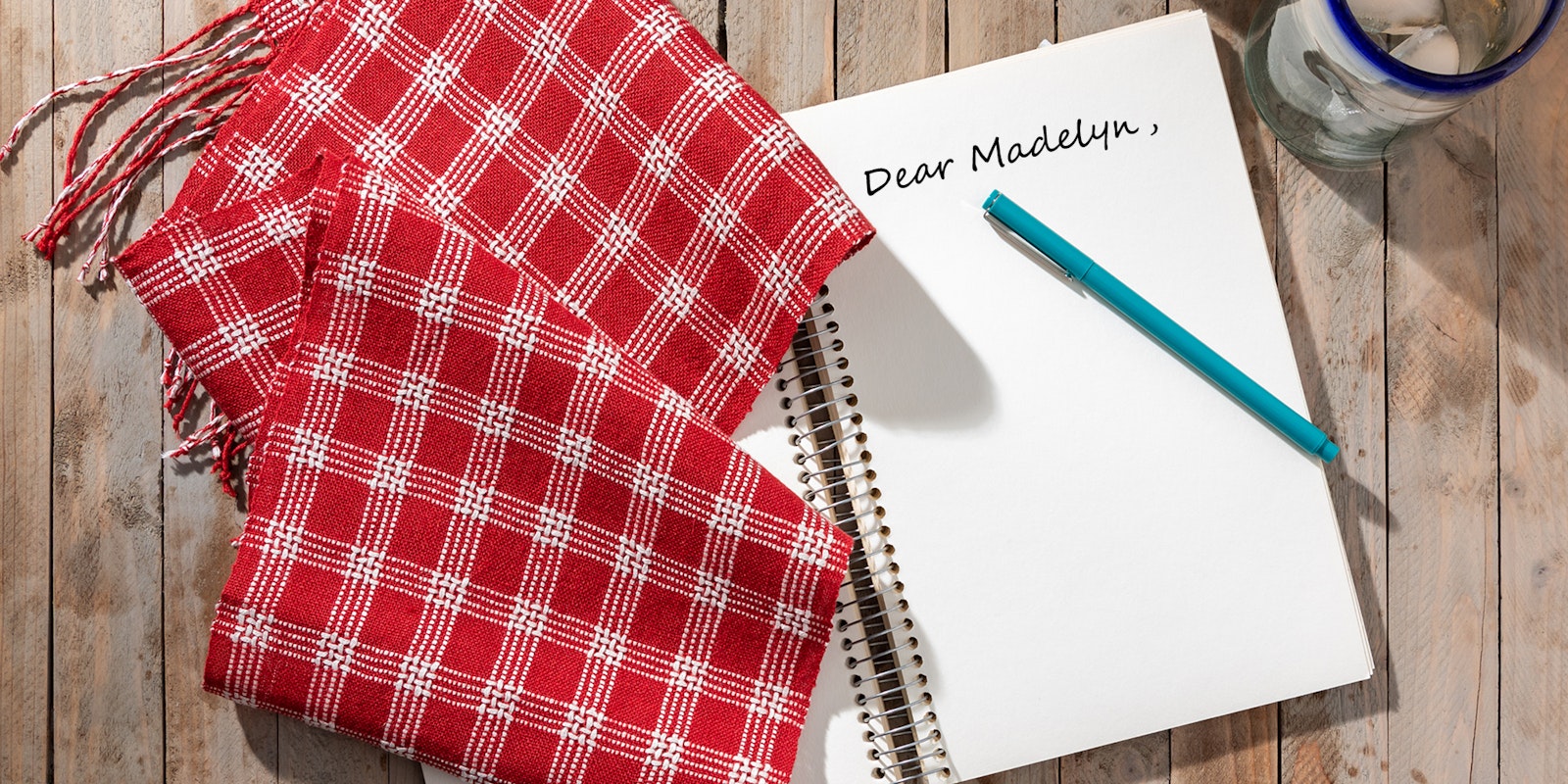Hi, Madelyn,
Two of my looms have metal apron rods and two have square-sided wooden apron rods. (And now the whole world knows that I am a loom junkie!) I find it easier to tie on to the metal apron rods, and I'm considering replacing the two wooden ones. Is one type better than the other?
––Regina Phalanges
Hi Regina!
I think this is really a matter of personal preference, though I'm not sure why you find the metal ones easier to use. Here are my thoughts about apron rods:
Metal rods are usually attached to the cloth beam with actual cloth "aprons." With these, you have to tie the warp in the spaces (usually triangular cuts into the canvas) where the rod shows in the apron sleeve. You therefore have to tie the warp in spaced-apart chunks and then "spread the warp" with thick scrap yarn for a ways before you start actually weaving. (I don't like to do this; I like to start weaving right away.) If you attach a second metal rod to the first one so that you can tie onto it more freely, the pair of them are very heavy. Even one metal rod can be so heavy that you can't start tying on with half-square knots because the rod's weight pulls them out.
Wooden rods are not as heavy as metal rods (and therefore could bend if not treated properly). I prefer them because they are not heavy and because they are usually attached to the cloth beam with cords (I like the method by which Texsolv cords exactly the same length as each other connect the rods to the cloth beam; I don't like cords lashing the rod to the beam; these require continual adjustment). Tie each warp bout by bringing it over the rod, split it into two groups underneath, bring the two groups over the top of the bout, and tie one half of a square knot; then, when all groups are tied this way, go back and tie the second half of the square knot on each group. A wooden apron rod won't bend if you remove the cords (that connect it to the cloth beam) beyond the warp on each side.
––Madelyn

